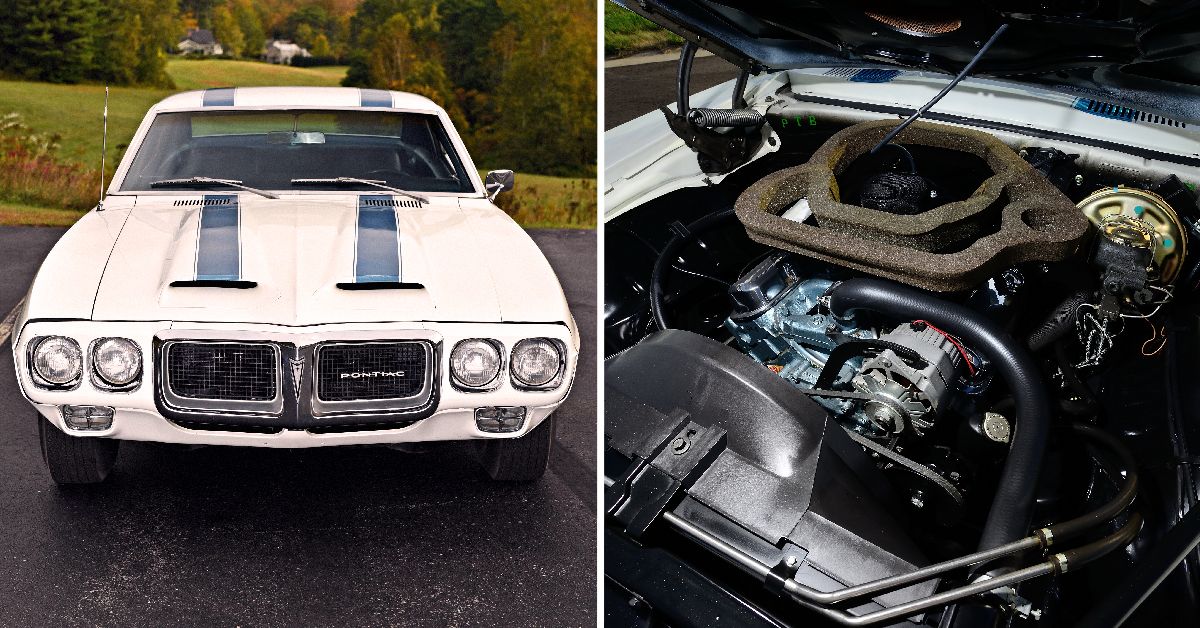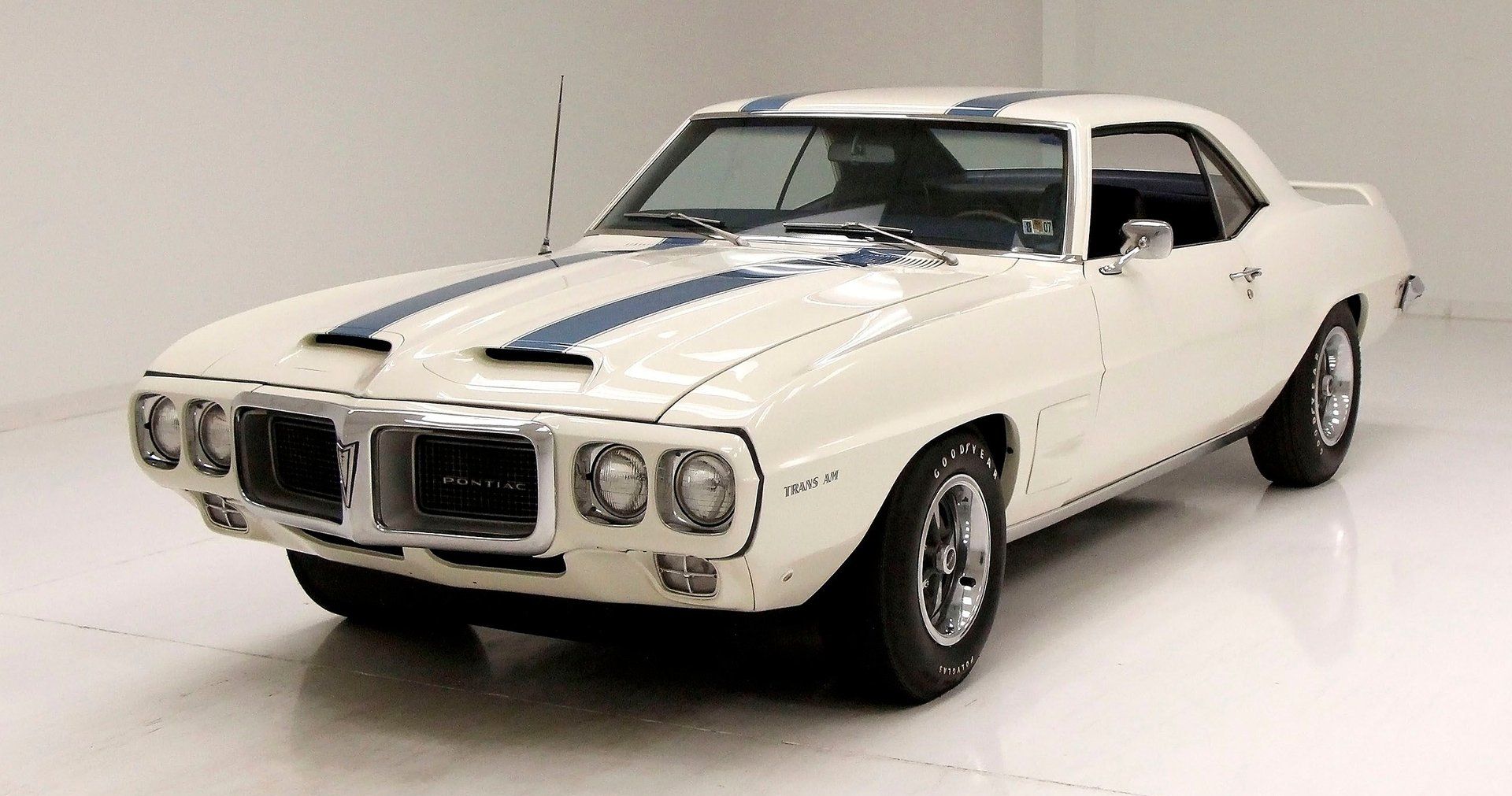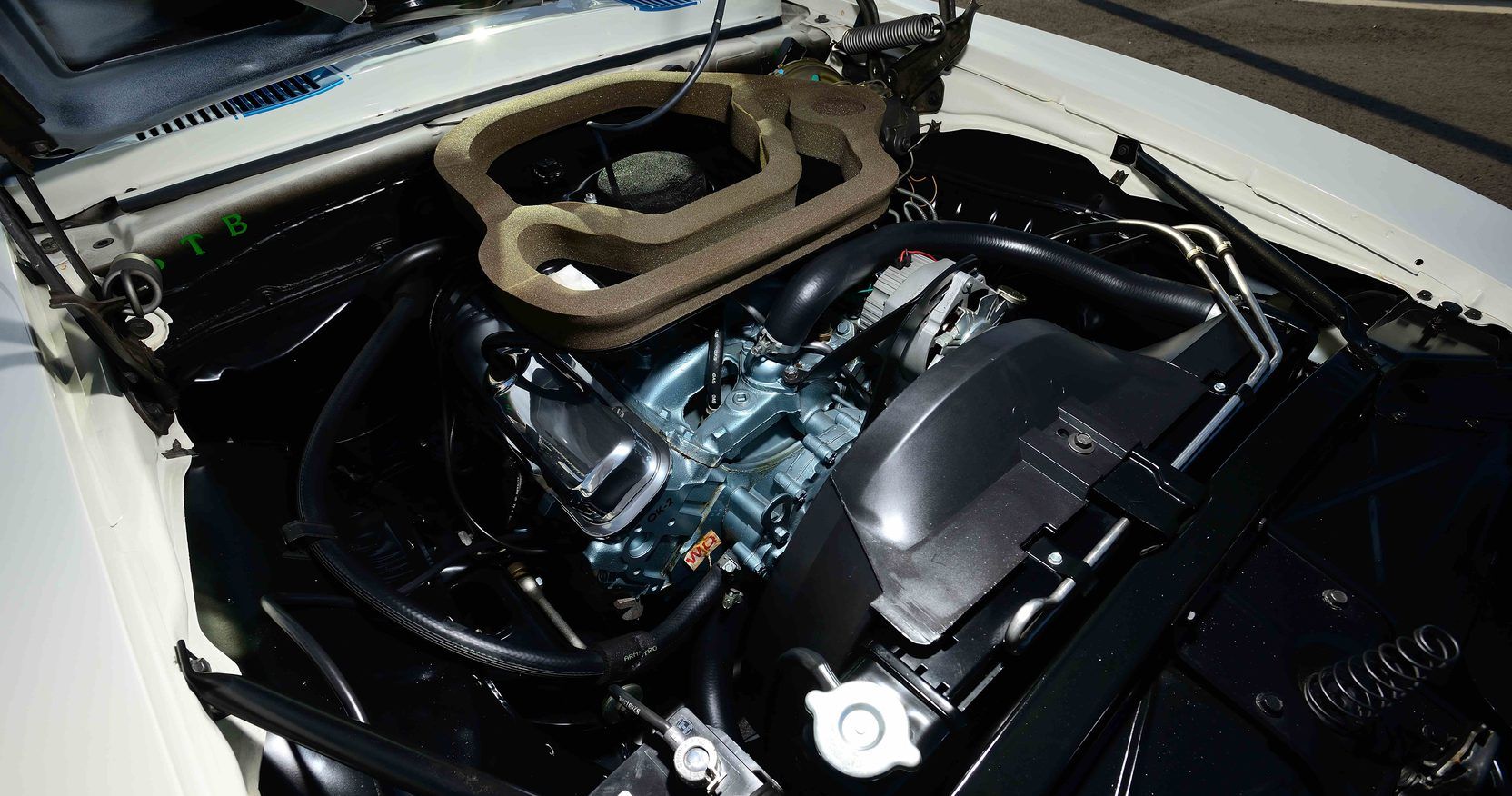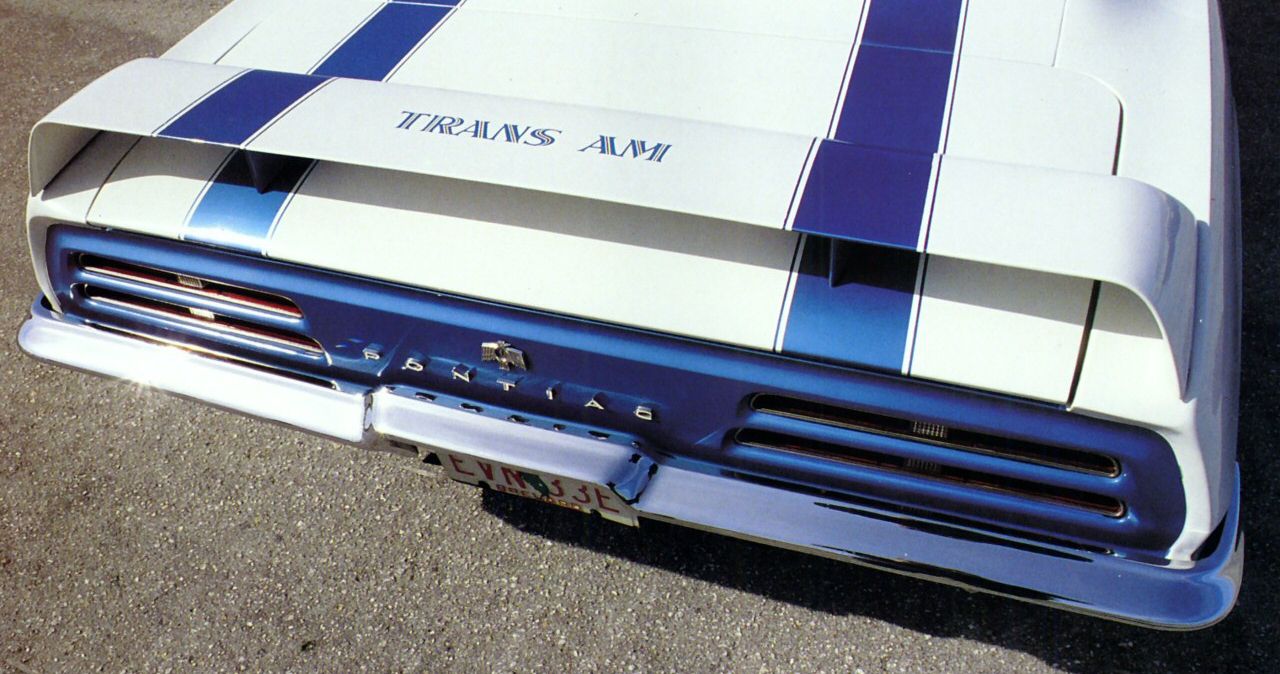Pony cars have been a fixture on American roads since the 1960's with the first appearance of the Plymouth Barracuda and decidedly more famous Ford Mustang. They are generally thought of as being a smaller 2 door coupe or convertible with a fresh sporty demeanor at a relatively inexpensive price. With engines options ranging from straight sixes on up to detuned NASCAR big blocks, the long hood, short deck rear wheel drive pony cars have exploded in numbers, variants and popularity over the years.
Almost as soon as the Mustang came on the scene, competitor's went to the drawing board to come up with similar offerings. And thus was spawned the likes of the Mercury Cougar, Chevrolet Camaro, AMC Javelin, and Dodge Challenger. A rather late entrant to the game was Pontiac with the Firebird and Trans Am.
Decidedly more upscale than the Camaro, and not involved in the Trans Am racing scene, the 1969 Pontiac Firebird Trans Am was nonetheless a potent performer with perhaps better road manners than her pony car counterparts. And as the 1969 Firebird and Trans Am were based on the 1967-9 Camaro body and frame, it was a standalone year until the new 1970 generation rolled out. But the 1969 Trans Am was always a favorite of mine and with collectors for this reason as a beautiful and idiosyncratic offering from the now defunct carmaker.
Let's take a look at the 1969 Pontiac Firebird Trans Am.
The 1969 Pontiac Trans Am
The 1969 Pontiac Firebird Trans Am was cooked up by none other than Division manager, GTO-creator, DeLorean snake charmer, John DeLorean himself. He wanted to distinguish the Pontiac brand as being superior to Chevrolet in all respects, so when GM higher ups axed the idea of the Pontiac Banshee concept coming to market, he devoted his energies to making a Firebird and Trans Am better than the Camaro.
Initial design work was taken on by Herb Adams of the Pontiac Design Group and styling influences and conventions were drawn from European models. DeLorean was working on an overhead cam six cylinder for use in the Firebird but GM nixed that idea too as it was considerably more expensive than existing engines in the GM parts bin. It was perhaps a blessing in disguise as the Firebird/Trans Am was more popular as a tighter, more comfortable big block car.
A True Performer
Under the hood, the 1969 Trans Am got the 400 cube Ram Air III V8 engine producing 335 hp. The much more desirable and rare Ram Air IV model, of which a mere 55 cars were ordered, had a sweetened up cam upping the horsepower to 345. The stock transmission was a three-speed unit with 3.55 gears in a 10 bolt posi while the Stage IV got a Muncie 4-speed manual transmission, and a 12 bolt posi with 3,90 gearset. She also came with a slick set of 14" x 7" rims with Polyglass tires all around and high-effort variable power steering.
But DeLorean and Adams were both more concerned with driving dynamics, road feel, and handling of the Firebird Trans Am. They did extensive testing on different suspension systems and combinations and ended up increasing the front sway bar size from 3/4" to a full 1" with polyurethane bushings instead of the rubber units. The result was a car with more direct steering, flatter handling characteristics and an altogether better ride.
Good Looks
On the outside, the Trans Am was quite unique and definitely different than the base Firebird and certainly distinguished from its Chevy counterpart. All Trans Ams came with a Polar White finish and blue racing stripes down the entire length of the car with generous use of decals that unfortunately are the bane of most mid-70's Trans Ams. Can anyone say "Flaming Checkin"?
Likewise, the hood was unique to the Trans Am and had working air scoops that could be opened or closed by the driver from the cockpit. A set of rear looking dual-fiberglass scoops sat on the front fenders and gave the car a purposeful look and vented air from the engine. Outback she wore an integral wrap around wing that looked ahead of its time for being non descript.
Check It Out
But with the conclusion of the 1969 model year, a new body style would be adopted leaving the 1969 Pontiac Firebird Trans Am as a singular beast in the history of pony cars. Had Pontiac not folded today I'm sure there would still be a Firebird/Trans Am on the road. But we can always dream, can't we? Buckle up.
Source: Hot Rod, How Stuff Works, YouTube




